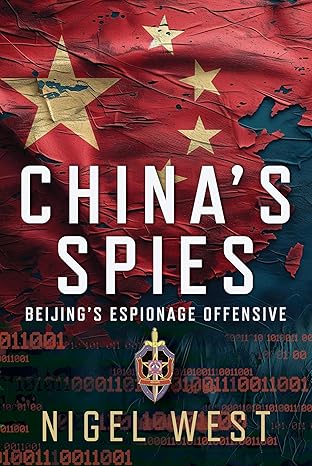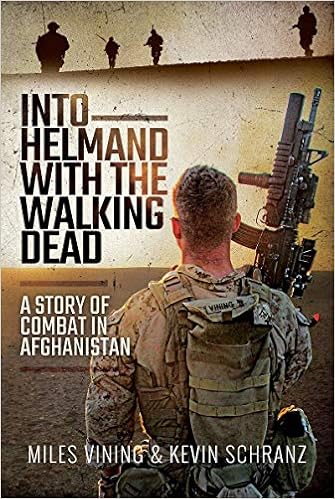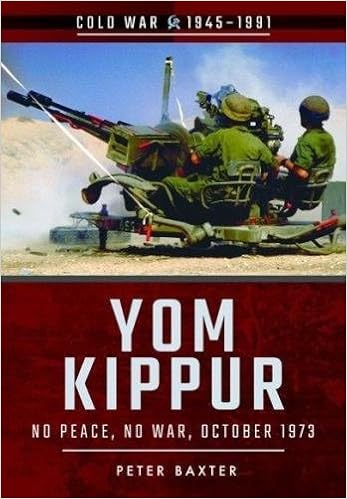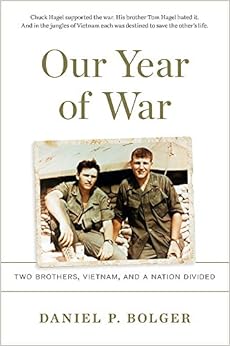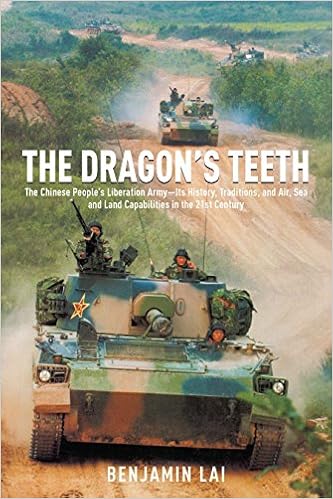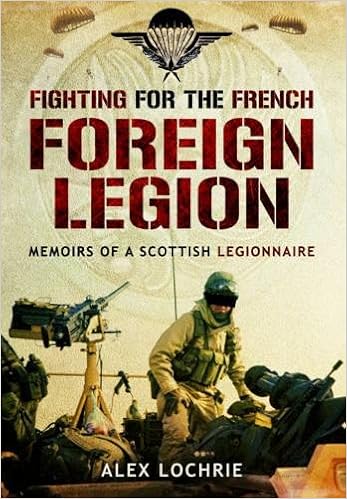Imperialistic Wars of Expansion and the Deployment of Modern Weapons
By Edward J. Langer
From the beginning of time man has been in constant conflict with his fellow man. War, death and destruction sometimes seem the norm and peace the exception. Thomas Hobbes, the 17th century English philosopher, says “that the natural state of humans is constant war with each other and that their lives are nasty, brutish and short.”[1] While we may or may not agree with Hobbes and hope that deep down inside man there is the desire for peace, from the time of Cain and Able in the bible to the present there have been many conflicts. During the 19th century into the beginning of the 20th century up to World War One, there were many wars, large and small: wars of aggression, wars of independence, civil wars, border wars and wars of imperialistic expansion. This paper will examine three conflicts caused by capitalist/imperialistic expansion and will demonstrate that in an imperialistic war that the side that maximizes the latest weapons technology won the battle and ultimately the war and that control of the sea was essential to ultimate victory. What set these conflicts apart are that they are among equal world powers and not between a European Power and a technologically primitive society.
Generally, a war of imperialistic expansion is conducted by a European Power against a more technologically primitive society. Advances in technology - weapons, transportation & communications - allowed a smaller European army to subjugate an area. The other side may have fought bravely but in vain only to be slaughtered by the greater killing power of European weapons. Technology allowed Europeans to advance and conquer the world. Some common traits of a war of imperialistic expansion are the following:
- Fought against a society of radically different religious and cultural beliefs and practices.
- Fought oversea far from the mother country.
- Fought against a more technologically primitive society.
- The people being subjugated are considered inferior to the European Power.
- A major cause of the war is to expand commercial interests.
- Technological advances in weapons, transportation and communications gave the edge to the European power.
Causes of Conflict
The prime cause of conflict in an imperialistic war was the need or greed for capitalistic growth. The French philosopher Raymond Aron contends that “in international relations the diplomat-strategist faces the risk of war since he confronts opponents in a situation of incessant rivalry in which each side reserves the right to resort to the ultima ratio, that is to violence.”[2]
“Aron asserts that political units do not desire power for its own sake, but rather as a means toward achieving some goal, such as peace or glory or in order to influence the future of the international system. Many kinds of circumstances, such as changes in military or economic technique, the transformation of institutions or ideologies, affect the goals of political leaders. Technological innovations modify previously held spatial concepts, including the strategic value of geographical positions and the economic importance of certain natural and human resources.” [3]
Peace is maintained between nations by three conditions:
a. They are in balance.
b. They are dominated by those of one of the units
c. They are outclassed by the forces of one of the political units. [4]
“Conflict, in the most general sense, results whenever two individuals, social groups, or political units covet the same property or seek incompatible goals.” [5]
In the imperialistic wars of the 19th and early 20th centuries there was definitely much coveting of property to the point of total greed. There was also the desire for glory such as Russia’s desire for a Far Eastern empire. But the “empires were built by private adventurers (capitalists) rather than by state action.” [6] The capitalist explored the future colony to ascertain its wealth potential and to establish trade. The state supported the capitalist to foster economic growth but also to become a world power. To become a world power and just not a name on the map a nation needed colonies.
Alfred Thayer Mahan advocated a strong navy to control the seas. “Mahan’s philosophy of world politics was compounded of two distinct but related theories: One was the thesis that national greatness rested upon mercantilistic imperialism; the other was the principle of the primacy of concentration of naval forces, in its applied form the doctrine of battle-fleet supremacy.” [7] “From a military standpoint naval forces existed for offensive purposes; that is, the best defense was offense, with the fight carried to a definite issue. This necessitated the concentration of the fleet at decisive points, and under no circumstances was the fleet to be divided or dispersed. The final destruction or total mastery of the enemy fleet was the primary consideration; privateering was definitely secondary. Such command of the sea not only permitted the maintenance of one’s own lines of communication while throttling enemy trade, but, if necessary, provided the means for the close supervision of neutral commerce.” [8]
Control of the sea with a large concentrated force permitted control of trade and control of enemy movements. Control of the sea also meant large, well-armed, state of the art warships. And because warship technology was constantly changing it was necessary to continually build new ships almost every year to replace those that became obsolete. The ultimate symbol of imperialism was the battleship. Only a wealthy, industrialized nation could afford the constant pressure to continually build expensive ships.
English economist J. A. Hobson “argued that imperialism results from maladjustments within the capitalist system, in which a wealthy minority over saves while an impoverished or bare subsistence majority lacks the purchasing power to consume all the fruits of modern industry. Capitalistic societies are thus faced with the critical dilemma of overproduction and under consumption. If capitalist were willing to redistribute their surplus wealth in the form of domestic welfare measures, there would be no serious structural problem. But the capitalists seek instead to reinvest their surplus capital in profit-making ventures abroad.” [9]
The need to protect capitalistic investment in an overseas venture was one of the primary reasons for the three wars studied below. America had many investments in Cuba and because of the continuing conflict between the rebels and the Spanish Army exports and profits were declining. “The island’s exports to the United States, her principle customer, fell by half between 1894 and 1896.” [10] European companies backed by their governments had huge investments in China. These investments would be at risk if Chinese nationalism fueled by the Boxers pushed the capitalist out of the country and instead China developed her own recourses. Tsar Nicholas II had invested many thousands of rubles of his personal funds in capitalistic ventures in Korea and all of this was at risk if Russia lost its Far East Empire to Japan. [11]
Technology
Towards the end of the 19th century there were many advances in weapon technologies. Building on the innovations of the many conflicts around the world during the middle of the 19th century, breech loading rifles with a magazine for multiple bullets were perfected. The machine gun – Gatling gun, Maxim and Colt machine guns – were developed and tested in battle from China to Cuba with devastating effectiveness. The breech loading, rifled artillery piece provided greater destructive power and accuracy at longer ranges with a faster rate of fire. And the ultimate symbol of imperialism was the armored warship. To be a world power a country needed a large navy with the latest ships including destroyers, cruisers, and battleships.
But modern weapons of war are expensive and only a highly industrialized nation could afford the latest weapon. Likewise, since technology was rapidly changing, the new weapon of today could be easily outclassed and made obsolete within five to ten years. Many of the earliest breech loading rifles used a rim fired copper cartridge holding power and ball. The center fire brass cartridge superseded the copper cartridge. This new cartridge offered greater reliability and thus a greater rate of fire. The problem was that the old rifles were still usable. Should a country afford the cost of purchasing new weapons when the old ones were still usable? The cost of one rifle is insignificant, but the cost of 20,000 rifles or more for an army can be very expensive. Should a country purchase only a few thousand rifles at a time? While this saves money in the yearly budget, this becomes a logistics nightmare to supply spare parts and the correct ammunition. For example, in China, “one unit had fourteen different types of rifles.” [12]
| Outfitting an army with new rifles was a small expense compared to the cost of building modern warships. Since technology changed so fast a ship could be obsolete within only a few years. Both the Italian Battleships’ Italia and Lepanto were laid down in 1876 and launched in 1880. As designed they were big and powerful. “Unfortunately by the time these vessels entered service the rapid development of the quick firing gun and high explosive shells had rendered them useless as battleships.” [13] Only a highly industrialized nation could afford the continuing cost of new warships. |
Great Britain was the leader in new armaments but even they were painfully aware of the high costs. “Though his diplomacy was involving Great Britain in the antagonistic groupings of the European Powers (just before World War One), Sir Edward Grey was alive to the evils of competitive armaments. He said about this time that the burden “if it goes on at this rate, must lead to national bankruptcy.” [14] “Between 1907 and 1912, the naval expenditure of Britain rose by £12,880,000, and that of Germany by £8,384,000. Between 1901 and 1912, the total naval expenditures of Britain was £456 millions, and of Germany £179 millions. Even before the War, the strain on German finance was becoming severe. Between 1897 and 1912, the cost of the German Army had risen by nearly £17 millions and of the Navy by nearly £18 millions. In 1913 it was thought necessary to introduce a capital levy of £50 millions for armaments and fortifications.” [15]
Modern armies and navies were expensive and poorer countries sometimes did without. “In 1885, upon witnessing a demonstration of the Maxim gun, Chinese emissary to London, Li Huang Chang, declared that China could not afford a gun that used up five British pounds worth of cartridges a minute.” [16]
While technology can provide an edge in battle, in the end, the outcome of any battle is determined by the skill, resourcefulness and daring of the participants. A perfect example of this was at the battles of Isandhlwana and Rorke’s Drift during the Zulu War. The British were extremely confident that they could defeat these savages. Modern weapons of war and well-drilled soldiers would be more than a match for primitive savages using spear, club and an occasional rifle. On January 22, 1879, a force of 20,000 Zulu warriors attacked 1200 British soldiers at Isandhlwana. Outnumbered 18 to 1 the British were badly defeated. Later that day at Rorke’s Drift a Zulu force of 4500 attacked a British force of 104 soldiers. Outnumbered 43 to 1 the British defeated the Zulu warriors. It was estimated that the British at Rorke’s Drift fired 20,000 rounds of ammunition. [17] Technology can provide the winning edge in battle provided that the soldiers and sailors using it have the skill, motivation and leadership to win despite the odds against them.
One of the major problems of modern weapons of war was their complexity. While a cannon of 100 years ago might consist of a one piece casting plus its carriage or mount, modern artillery had many parts. Each part had close tolerances, needed to be kept clean, serviced and repaired. To maintain and operate the weapons you needed skilled soldiers and sailors and they needed to practice with the equipment on a regular basis. An example of a modern complex weapon is the turret and guns of an American Iowa class battleship. “The…equipment is so complicated that the ordinance manual governing its operation (OP 769) covers almost 500 pages of small print.” [18]
Likewise, you needed officers who were familiar with the new weapons and could exploit their use. A perfect example is the machine gun. “The ongoing development of the machine gun held out the promise of making swords and other bladed weapons into mere artifacts. Roosevelt received an introduction to this technology on the slopes of San Juan Heights and was impressed with its effectiveness.” [19] When Roosevelt became president he pushed for the establishment of specialized machine gun corps to exploit the effectiveness of the weapon in future conflicts. Lack of skilled soldiers and sailors and officers not knowing how to effectively use the new weapons of war will doom many battles.
It is interesting to note that as weapons became deadlier, it was thought that war would disappear. “Weaker competitors are driven to the wall and forced out of the race. War of the most deadly character, war which ruins states and crushes nations, is waged without firing a shot. Added to this is the cost of armies and navies, which only the strongest can bear. Shall we therefore conclude, with M. Jean de Bloch, that war has become so expensive and deadly as to be impossible? His theory is plausible, but not convincing. Recent experience confirms the maxim that the more deadly the weapons, the less the slaughter.” “Moreover, war is to-day, more than ever before, a conflict, not of arms, but of civilizations; the more complicated its machinery, the more it depends upon the intelligence and character of the man behind the gun, and the greater is the drain upon the resources of the nation.” [20] While these words were written in 1900 as a statement of fact, considering the carnage that would envelop Europe 14 years later, these words seem from today’s view more as a hope and a prayer that civilizations would eventually find war economically and socially too expensive to wage.
The Boxer Rebellion
Toward the end of the 19th century European powers adopted a new form of imperialistic expansion known as the “sphere of influence.” This was used to good effect in China where provincial governments acted on their own and ignored the weakening central government.
“Western companies that had penetrated into the interior of China began (sometimes with the aid of their governments) to make special arrangements with provincial authorities whereby they would gain monopolies over construction and mineral rights. By the middle of the 1890’s such spheres of influence, each dominated by a single foreign power, had become commonplace in China: the British in the Yangtse Valley; the French in Yunnan and Kwangsi in the south; the Russians in Manchuria; and the Japanese in Coastal Fukien.” [21]
Who was missing were the Germans. Not one to be left out, the Germans sought to gain a toehold in China by establishing a naval base at Jiaozhou but were hesitant to take control of the port. On November 1, 1897, two German missionaries were murdered at Zhangjiazhuang. This incident gave the Germans the justification they needed to seize the port at Jiaozhou. This set off a scramble by the other powers to seize other port facilities and territory. As foreign powers exerted more muscle in China, a wave of anti-foreign sentiment began to sweep the country resulting in many attacks on business people and missionaries. This was the beginning of the rise of nationalism fueled not by the Manchu government in Peking but by the people in the provinces identifying themselves as Chinese.
In response to the anti-foreign sentiments there arose a provincial militia group(s) known as the Boxers (the actual origin of the Boxers and their name is unclear). The Boxers attacked anything foreign from railroads to missionaries. The Manchu government attempted to incorporate the Boxers into the regular army but was only semi-successful.
China’s military around Peking consisted of five armies. These armies combined with other militia groups numbered some 90,000 soldiers not including the Boxers. More troops were available in the other provinces. They were also fighting on their own soil giving them a decided home court advantage. On paper China had sufficient military strength to take on any European army and easily defeat it. However, “foreign military officers who inspected the Chinese troops in the capital area commented on a variety of continuing problems: poor leadership, lack of training, the wide variety of weapons… and those persistent evils, corruption and inadequate pay.” [22] Boxer weapons were even more primitive consisting of rifles, muskets, “spears, swords and even clubs.” [23] European weapons consisted of the latest rifles and artillery plus Maxim and Colt machine guns.
In June 1900 the Boxers began to enter Peking in the thousands. The government appeared powerless or unwilling to control them. The Europeans, Americans and Japanese in the legation quarter of Peking prepared for the coming battle by fortifying the area and requesting troops from the coast. At two major battles at the Taku Forts and at Tientisn the Chinese offered resistance but when faced with the possibility of defeat they ran. Even worse, on August 11th at Tungchow the Chinese regular army fled without a fight. The Boxers laying siege to the legation quarters in Peking fought fiercely but made little headway.
By the end of July allied troops numbered over 17,000 soldiers. On August 14th the allied troops entered Peking. Each group was given a section of the city to assault. The “Russian force was able to assault Peking with two machine guns and four cannon, against thousands of Chinese soldiers armed with muskets.” [24] China had no machine guns. By August 16th the allied troops controlled the city.
On August 19th the Chinese court was trying to initiate peace negotiations. In September allied troops sought out remaining Boxer pockets of resistance and easily defeated them. On January 16, 1901, the conflict officially came to an end.
In the 1890’s China had tried to reorganize and modernize its army. It found it expensive and difficult to change ingrained bad habits of corruption and incompetence. Its officers lacked the skill and discipline to wage war. Even though the Chinese forces vastly outnumbered the allied troops, the lack of modern equipment, training and the ultimate desire to win cost them the war. The Chinese fought a 17th century war against a 20th century enemy.
It should be noted that there were no naval battles fought during this war. European ships had shelled the Taku Forts, but there was no hull-to-hull gun action between combatants. If there had been naval battles the war may have ended differently. The allied forces had to use the sea to bring troops and supplies to China. This should have been the allies’ weak link, but since China had no navy it could not prevent their enemies from gaining and maintaining a toehold on land. The imperial court at Peking, far from the ocean, was content to let the allies land in the mistaken belief that their armies would defeat them. China had remained isolated for too long of time and did not keep abreast of the need for modern weapons.
The Spanish-American War
Another war of imperialistic expansion fought among equals was the Spanish-American War. While the Boxer Rebellion was strictly a land war, the Spanish-American War consisted of two major naval battles then a land war on islands. The naval war determined the outcome of the entire war. This does not mean that the land battles were insignificant nor were they easy or one sided, but whoever controlled the sea controlled the movement of troops and supplies.
In the 1880 the United States Navy was at one of its lowest points of combat readiness “with hardly a seaworthy ship to call its own.” “In a series of Congressional debates beginning in 1883 it was pointed out that the United States stood as low as 20th in the lists of the world’s naval powers and that new ships were urgently needed to replace the obsolete veterans of the Civil War.” [26] The United States decided to improve its navy and by 1895 it could boast the beginnings of a modern navy.
At the beginning of the war, on paper, the Spanish Navy was superior to the American Navy. “It was said at the beginning of hostilities that Spanish warships in commission numbered 137, to eighty-six in the American service. But such figures are deceptive. The United States had besides vessels of less tonnage, six armored ships of 8000 tons or more. In this number were the four first-class battleships Iowa, Indiana, Massachusetts, and Oregon, each of which was 10,000 tons or more. Spain had nothing equal to these. The Flower of the Castilian Navy consisted of nine armored men-of-war, ranging from 6840 to 9900 tons. The rest of the Spanish Navy comprised, for the most part, old iron and wooden ships. But the disparity between the figures on paper and the real facts was not known even among leading Spanish officials.” [27]
The Spanish-American War began as an insurrectionist movement in Cuba against Spain. For 30 years the rebels sought to expel Spain but could not do so. Likewise, the Spanish Army, although well trained, could not defeat the rebels. In 1896 the Spanish tried more repressive measures against the Cuban population. On January 12, 1898, rioting erupted on the streets of Havana. The United States decided to send the battleship Maine [28] to Cuba hoping it would have a calming effect. Unfortunately, on the evening of February 15th, a massive explosion destroyed the ship. The Americans claimed a Spanish mine destroyed the ship. The Spanish claimed that an internal explosion caused the destruction. “There is still controversy regarding the sinking of the Maine. It is now thought likely that the magazine explosion was caused internally, possibly by a spontaneous fire in bituminous coal stored in an adjacent bunker.” On April 25, 1898, war was officially declared against Spain.
The first naval conflict was the battle of Manila Bay on May 1, 1898, “Most world powers considered the United States Asiatic squadron to be little or no threat to the Spanish naval forces. The Americans also over-rated the Spanish Navy’s ability and determination to fight, and most authorities considered the fleet to be sailing into a veritable deathtrap. In addition to the naval forces, many Spanish gun batteries existed in the fortifications around Manila Bay. These guns alone should have been enough armament to destroy the American squadron.” [30]
At 5:15 a.m. the battle commenced with the Spanish firing the opening shots from the shore batteries and then the ships. The American fleet opened fire at 5:40 a.m. By 8:00 a.m. there was a lull in the battle as the American Fleet withdrew to take stock of the action and redistributed ammunition. The battle recommenced at 11:16 a.m. but the Spanish Fleet had already been defeated before the lull. The battle was over at 12:30 p.m. when the Spanish hoisted a white flag of surrender.
Spanish Admiral Montojo’s report of the battle provides a lineup of the forces. “The force of these (American) vessels, excepting transports that were noncombatant, amounted to 21,410 tons, 42,290 horsepower, 163 guns (many of which were rapid fire), 1750 men in their crews, and of an average velocity of about 17 miles. The power of our only five effective ships for battle was represented by 10,111 tons, 11,200 horsepower, 76 guns (very short of rapid fire), 1875 crew, and a maximum speed of 12 miles.” [31] The outcome of the battle was that the Spanish Fleet was totally destroyed. “Our casualties, including those of the arsenal, amounted to 381 men killed and wounded.” [32]
The American fleet had suffered light damage with nine men injured. Two men had died but not due to battle injuries. The evening after the battle “the USS Olympia Brass Band serenaded the crowds of people teeming along the Manila waterfront with a selection of music including many Spanish numbers, punctuated by continuing explosions of ammunition aboard the still burning Spanish vessels.” [33]
The second major naval battle was the Battle of Santiago Bay on July 3rd. When war seemed evident, Spain had sent Admiral Cervera to Cuba. “His four cruisers were heavily armed and armored ships, rated at a trial speed of twenty knots and presumably capable of making sixteen knots under service conditions. His torpedo boats were new, very fast, the best product of English yards.” [34] Since naval warfare was rapidly evolving there was much disagreement among the experts as to which battle tactics to follow. “Many naval experts believed that armored cruisers and fast torpedo boats were the two most effective types of warships, and therefore, regarded the American Navy as inferior to the Spanish.” [35] With his fleet Admiral Cervera should have raided the American ships singling out stray vessels and destroying them with overwhelming gun power and thus break the naval blockade on Cuba. Unfortunately, coal supplies were extremely tight and instead the Spanish Fleet took refuge in Santiago’s harbor.
The battle commenced at 9:28 a.m. with the Spanish Fleet leaving Santiago’s harbor as individual ships with the intent of avoiding contact with the American Fleet. The Spanish Fleet was on the run but American battleships patrolling outside the harbor took them under fire and destroyed them individually. The battle was over by 1:12 p.m. Four Spanish cruisers and two torpedo boats were totally destroyed. Spanish casualties were very heavy. American casualties were light with sailor killed. In the land war in Cuba, Spanish soldiers fought bravely and fiercely but without support from Spain by sea they were doomed to defeat. The United States could reinforce and resupply its soldiers at will and had the benefit of modern weapons. The war ended on August 12th.
This battle answered the question as of the effectiveness of battleships versus cruisers and torpedo boats. Both battles showed the superior training of American sailors. “The U.S. Navy’s greatest asset was its trained officers and men. Spanish naval crews were given very little indoctrination in gunnery practice. Ammunition was continually in short supply because of the country’s financial problems.” [36]
Spanish gunnery inaccuracy was most telling at the Battle of Manila. They had fired for thirty minutes without effect against the American forces and overall damage to the American vessels was very light. At Santiago only one Spanish shell hit an American ship.
Spain had modern warships but poorly trained sailors. Many of their ships were in poor material condition and needed refits to bring them up to fighting conditions. The march of war prevented needed repairs and the lack of coal and support facilities necessary for ship maintenance was one of the causes of the defeat. Warships are expensive too, and Spain needed many more ships if it ever hoped to maintain whatever empire it had left. A country in poor financial health could not afford the continuing expense of building new warships and thus must drop out of the game.
The Russo-Japanese War
The final conflict this paper will study is the Russo-Japanese war of 1904-1905. This war developed because of “the tsar’s constant dream of a Far Eastern Empire,” [37] and because of capitalist ventures in Korea and China partially backed by the tsar’s own rubles. The key to this empire was Manchuria, but by agreement with China ending the Boxer rebellion Russia was to vacate Manchuria. The failure to honor this commitment caused alarm between Great Britain and Japan. “Russia in Manchuria was inevitably a menace to Korea and would continue to be so, whatever promises to the contrary she gave; and that Manchuria was not unimportant for Japan’s security and she might in the long term have no alternative but to drive Russia out of Manchuria. To this end Japan required the co-operation of powers which shared her interests; and Britain was clearly one of these.” [38] Britain was trying to limit Russian expansion in the Far East but lacked the warships necessary to force her will. Battleships are expensive and there was only so much money in the budget for building ships for duty in home waters against possible threats from France or Germany. An alliance with Japan was a perfect fit. Japan could purchase modern British built battleships and act as her proxy against Russia.
Japan needed an alliance with a world power that had a heavy industrial base that could supply her with modern technology and the latest weapons of war until her own industrial base was able to be self-sufficient. On January 30, 1902 an agreement was signed. Immediately “Japan’s naval authorities worked out with Britain details of naval co-operation which enhanced her security in the East.” [39]
As Russia continued to stall departing from Manchuria tensions mounted between Russia and Japan. When Japan could not wait any longer they attacked the Russian Fleet at Port Arthur on February 8, 1904. Only one battleship was seriously damaged but the shock of the attack overwhelmed the Russians. Japan declared war on Russia on February 10th. While this war consisted of land battles and naval battles, the naval battles were the most important. This does not mean that the land battles were small and insignificant but whoever controlled the sea controlled the land. If the Russian Fleet could defeat Japan at sea then they would cutoff Japanese reinforcements to the mainland. “No, one, not even the Japanese, supposed that they were capable of sustaining a serious war against Russia.” [40]
Russia had been building warships for years. In 1898 it had 12 battleships (with 10 under construction or projected) and 10 armored cruisers (with one under construction). Japan only had 3 battleships (with 3 under construction or projected) and one armored cruiser (with 6 under construction or projected). [41] “Russia intended to form a fleet, based on Port Arthur, which would consist of 6 or, if possible, 8 battleships, 20 destroyers, and 8 cruisers.” [42] By April 1901 Russia had in the Far East five battleships, six armored cruisers, two cruisers and six destroyers versus Japan’s five battleships, 4 armored cruisers, ten cruisers and thirteen destroyers. [43]
Unfortunately, the Russian Fleet was not considered a very formidable opponent. “The French, who had good opportunities to determine the real worth of the Russian navy, had no better opinion of it in 1903 than before.” [44] In describing joint fleet operations the French said, “they are so poorly handled that their cumbersome mass could do nothing but weigh down and paralyze our own.” [45]
The war did not go well for Russia. In a series of naval engagements in August 1904 the entire Far Eastern Russian Fleet ceased to exist. The land war was going just as bad for Russia. “The only hope for the Russians was to redress the balance in the China Seas and thus cut off the Japanese armies in the mainland from their island base.” [46] The Russian Baltic Fleet was mobilized and sent to destroy the Japanese Fleet. “The Baltic Fleet consisted of twelve battleships in seven very dissimilar classes. Half of this squadron was composed of elderly, obsolescent warships, quite incompatible in speed, armament and protection-and, therefore, tactical deployment-to their modern counterparts, compelling the Russian commander to maneuver his fleet in conformity with his weakest unit.” [47]
The 18,000-mile voyage proved rough on the ships and the sailors. Britain controlled most of the coaling stations en route and denied them to the Russian Fleet forcing the fleet to carry all of its coal with it. In early 1905 there were mutinies on two ships. Added to this was an inept command. Admiral Zinovy Rozhestvensky was a personal friend of the Tsar and had never commanded a fleet in combat. “Although most of the men he commanded were raw recruits hastily brought into service since the Port Arthur debacle, he appears to have given no attention to training during the voyage. Neither did he convey to his officers any plan of battle against the enemy that lay in wait at the end of the journey. Instead, Rozhestvensky spent the voyage seated on his bridge, watching to make sure that the ships stayed in line and kept the prescribed distance from one another.” [48] By the time the fleet reached the Pacific the land war was already lost and the fleet headed for Vladivostok. At the Straits of Tsushima the two fleets met on May 27, 1905. The Russian Fleet was larger but the better disciplined more homogenous Japanese Fleet ruled the day. The battle was decided within an hour but the Japanese hammered the Russian Fleet relentlessly until the next day. The final outcome saw twenty Russian ships sunk, seven surrendered, two foundered, six escaping to neutral ports, one missing and presumed lost and two escaping to Vladivostok. Japanese losses were three torpedo boats. The war was over, all it needed was a treaty which was signed on August 9, 1905.
Russia could not control the sea; therefore, it lost the land battle. Its fleet consisted of the brand new plus the very old. The Japanese fleet, though smaller, was relatively new and commanded by British trained Admiral Togo. The Japanese Fleet constantly trained for combat while the Russian Fleet did not. Finally, the long voyage took a toll on the condition of the ships. The ships needed a refit before going into battle, which could have been available to them at Vladivostok if they had reached it. If Russia had sent just newer ships, were able to secure maintenance facilities along the route including coal, adequately trained their sailors in the use of the machines of war and had better leadership, then possibly the battle could have ended differently.
The three wars of imperialistic expansion listed above were exceptions to the normal war of imperialistic expansion. The wars were among equal powers, and at least in the Spanish-American War and the Russo-Japanese war the victor had at one time been considered the military underdog. Mastery of modern weapons technology facilitated victory. Finally control of the sea ensured a continuing flow of troops and supplies for the victorious armies and denied these resources to the enemy.
| * * * |
Show Notes
| * * * |
© 2025 Edward J. Langer
Published online: 10/06/2018.
About the author:
Mr. Langer is an historian, researcher, and analyst. He holds a B.A. in History from California State University – Fullerton and an M.A. in History from California State University – Los Angeles. He is a member of the International Naval Research Organization and the California Writers Club, Inland Empire Branch. His articles have been published in Military History Magazine, Colloquy and Fresh Ink.
* Views expressed by contributors are their own and do not necessarily represent those of MilitaryHistoryOnline.com.

